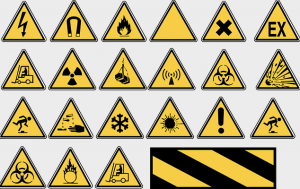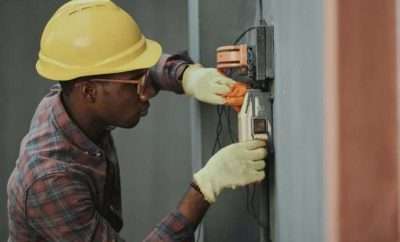 Pexels
Pexels
Safety Signs are Vital to a Successful Workplace
Safety Signs are Vital to a Successful Workplace
Safety signs serve a very important purpose in the workplace. They are meant to make employees aware of any potentially hazardous areas where the risk of physical harm is high. Needless to say, safety signs are vital to a successful workplace.
In most cases, companies are legally required to post these signs to warn other people about the potential hazards and to implement safe work practices. These signs can educate and remind people to take caution when necessary. Which reduces the chances of an accident occurring in the workplace.
Safety signs in the workplace have changed over the past 100 years.
In the beginning, there were simply universal safety signs, oval-shaped signs with simple warnings like, “Danger,” or “Think Safety.”
Later standards were set in place to require a little more detail on the signs. Instead of just “Danger,” it might state something like, “Danger: High Voltage,” or “Caution: Low Clearance.”. Images and symbols were also added to signs to illustrate the dangers.
In the 21st century, additional safety standards require safety instructions to be on signs. Now you might see signs like, “Danger: Hazardous Voltage. Certified official use only,” or “Caution: Low Clearance. Watch Your Head.”
Notice how the safety signs have evolved? There is more emphasis on safety than ever before.
To better understand optimal safety practices, check out the following reasons why safety signs are vital to a successful workplace:
Images are a Universal Language
image via pixabay/pixabay license
Although written descriptions on safety signs are helpful, they aren’t very informative to people who cannot read the language in which they are written. Older safety signs failed to display images on them, which meant that foreign workers more often sustained injury.
Now, signs often include very detailed images. Images serve as a universal language to show anyone what kind of danger exists in a particular area.
Visible Placement Ensures Signs are Seen
The placement of safety signs needs to be someplace visible where people will clearly see them. Not only that, but the signs need to be readable from a minimum of 5 feet away, ensuring that workers stop themselves from entering a danger zone if they’re not prepared to or educated in handling themselves.
Colours Hold Meaning
Safety signs are often colour-coded to quickly signal what type of danger exists. If employees are well trained, they will also know how to handle themselves in the situation without having to think for too long.
Safe companies normally use the same colour codes on all the signs posted in their facility. Normally, red colours mean STOP or EXTREME DANGER. Orange means WARNING, and yellow means CAUTION.
Appropriate Messaging Leads to Understanding
It is OK for safety signs to give brief details about the danger that exists, but they shouldn’t give sentences or paragraphs to read. People have short attention spans, and they will easily ignore signs with too much information on them.
Keep warnings brief and to the point. Start with one or two words in a large font to grab attention. These can include, “WARNING,” “DANGER,” or “CAUTION.”
Underneath that header, include a smaller-sized font that might say something like “Risk of electrocution,” or “Risk of slipping and falling.” These messages should have a small image or pictogram illustrating this danger, as well.
Types of Signs Ensure Safety
Use the right types of signs to provide the proper safety warnings to people, including:
Notice – Notice signs describe information and instructions on how to use machines, equipment or other information about how to act in a particular area.
General Safety – General safety signs provide brief messages and tips related to safety and health, including notices like “wet floor,” or “first-aid station.”
Admittance – Admittance signs describe the dangers of entering an area that is restricted and what might happen if you do.
Fire Safety – In case of a fire, these safety signs let you know where the exits and fire extinguishers are.
Non-Hazard Signs – Non-hazard signs do not warn about danger or hazards. They provide general information about a facility, such as directions or general company practices and procedures.















